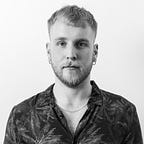Where do we begin?
I’m always nervous when committing to paper the first few lines in a new notebook. I want to set the right tone and start off on the right foot. I feel the same about this workbook. There’s one critical question on my mind: where on Earth do I begin? Embarking on a journey without a map is both exciting and nerve-racking. I’ve travelled all over the world but I always have a rough plan; I like to cook but I’m guided by a recipe; I’m perfectly capable of building flatpack furniture, thanks to instructions. Life, of course, does not come with an instruction manual and neither do projects like this.
“To make something good, just do it. To make something great, just re-do it, re-do it, re-do it.”
The key to starting anything, I’ve learnt, is simply to start. I’m often inspired by the advice of Kevin Kelly: “To make something good, just do it. To make something great, just re-do it, re-do it, re-do it. The secret to making fine things is in remaking them.” There comes a point in time when more planning, inspiration and analysis is no longer going to help. Instead, one must simply start the work. The finer details can be worked out along the way. The editing room is the place for perfectionism.
In our first meeting, our group started by introducing ourselves one by one. This was a great opportunity to learn about people’s strengths and interests — it turned out we were a pretty diverse group skills-wise, which we agreed would be useful throughout the project. What started as introductions, however, turned into well-intentioned procrastination as we continued to talk about our pasts, interests and the unavoidable topic of the moment, COVID-19. Upon realising we needed to get back on track, we ran into the inevitable question for the first time: where do we begin?
“One should not be embarrassed to think in public.”
One thing I appreciated about our group was our ability to embrace silence. For some, silence is painfully awkward. But silence opens up space for reflection. I have a habit of saving quotes (as you’ll learn reading these entries) from books, films, podcasts, anywhere. Some think quotes are cheesy, and they can be, but I believe good quotes are nuggets of distilled wisdom. One such quote is an exchange between journalist Krista Tippett and writer Mary Catherine Bateson on the On Being podcast. Tippett says, “There’s a fear in the [podcasting] world of silence but silence is a part of a conversation too,” to which Bateson replies, “I’ve thought for a long time that one should not be embarrassed to think in public.” By trying to avoid “awkward” silences, we often say a lot to say very little and I’m grateful that our group didn’t fall into this trap. We always allowed ourselves “to think in public” and it ultimately led to more fruitful conversations and “aha” moments.
Anyway, after some silence and thinking time, we did the only thing we could, we just started. A serial notetaker, I have several physical and digital versions of what I call a “brain dump,” places to dump ideas as and when they come to me before they disappear into the ether. What we needed at this stage was a group brain dump. At first, we tried this in a Google Doc but the format was too restrictive for four people to use at once. We needed a tool that reflected the freedom with which we wished to think and share our ideas. Miro afforded a lot of freedom to share and connect ideas in the form of words, images or videos, we went with that.
Our biggest challenge at this early stage was not thinking in terms of problems and solutions and avoiding typical design processes such as design thinking. Instead, we used the idea of possible futures and what-if questions introduced in the second Creativity in Design session and described by Anthony Dunn and Fiona Raby in Speculative Everything (chapter 1, pages 2 and 3). Riffing on the idea that possible futures are “by necessity provocative, intentionally simplified, and fictional,” we came up with ideas such as:
What if the city were a never-ending arts, music, food and culture festival?
What if we let children design the city?
What if we valued creativity over productivity?
What if the city could autonomously elect the ones who govern?
The aim was to think without constraints and share without judging one another’s contributions. The latter was surprisingly easy but the former opened up an interesting conversation into how unconstrained we could truly be in our thinking. We agreed that each of us is, unintentionally and without realising, constrained by our experiences and our biases. We like to think that humans are more creative thinkers than computers because they are limited by their programming but, we too are programmed. So where did this leave us if we wanted to think beyond what has come before and beyond our limited scope onto the world?
This wasn’t a question we could ever fully answer. But recognising our personal constraints, programming and biases was a great way to begin the project. Working in a group meant we could bring together multiple perspectives and openly challenge one another’s biases. And it was productive to lay this foundation early on when thoughts and decisions had the most power to influence what was to come. We decided at the end of our first meeting to each choose something from the Miro board that we’d like to individually explore in more detail before meeting again, I chose “what if the city had empathy?”
